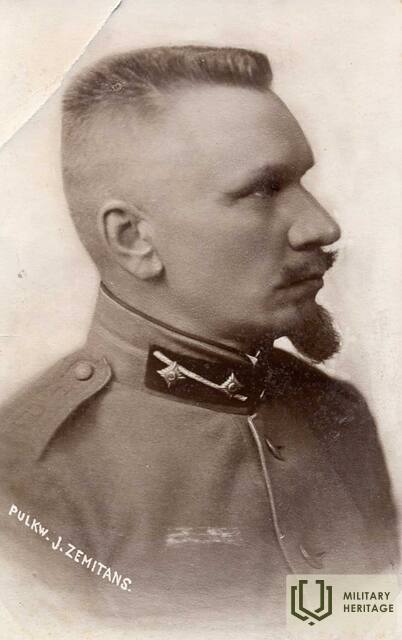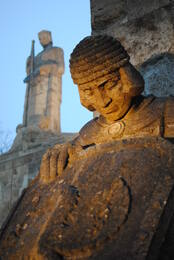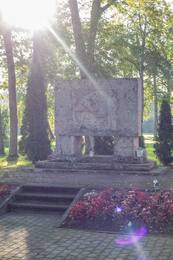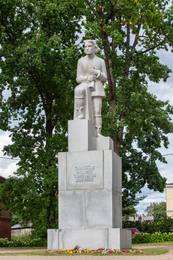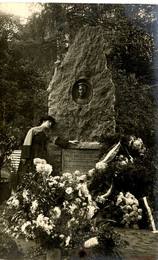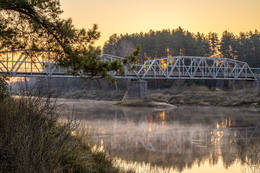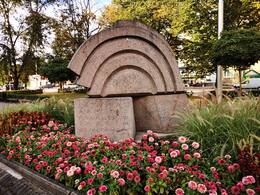LKOK, pulkininkas Jorģis Zemitāns (1873-1928)
I WW1, I Nepriklausomybės karai
Jorgis Zemitanas gimė 1873 m. vasario 23 d. Skrīverių valsčiuje, pats mokėsi. 1897 m. baigė Vilnių junkerių mokyklą. Pirmojo pasaulinio karo metu kovojo Rytų Prūsijoje, kur 1915 m. pateko į vokiečių nelaisvę.
Grįžęs iš nelaisvės, 1918 m. gruodžio 7 d. Zemitanas savanoriu įstojo į Latvijos ginkluotąsias pajėgas ir tapo 2-osios Rygos gvardijos kuopos vadu bei Rygos gvardijos ir Latvijos kariuomenės viršininku. Po Rygos žlugimo, 1919 m. sausio 10 d. Liepojoje, jis buvo paskirtas įgaliotuoju Latvijos laikinosios vyriausybės kariniu atstovu Estijoje. Gavęs Estijos vyriausybės leidimą, Zemitanas pradėjo formuoti šešias Latvijos savigynos kuopas Taline, Pernu ir Tērbate, kurios dalyvavo mūšiuose su bolševikų daliniais Estijoje, tačiau 1919 m. vasario 1 d. kartu su Estijos armijos daliniais išvadavo Rūjieną ir septynias apylinkių valsčius. Vasario 2 d. Latvijos gynybos ministras Jānis Zālītis paskyrė Zemitaną formuojamos Šiaurės Latvijos brigados vyriausiuoju vadu. Vasario 28 d. jis buvo paaukštintas generolu (pulkininku leitenantu), o kovo 13 d. – pulkininku. Zemitānui priskiriami pagrindiniai nuopelnai formuojant ir vienijant Šiaurės Latvijos ginkluotąsias pajėgas, taip pat Nepriklausomybės karo mūšiuose Vidžemėje. 1919 m. birželį Estijos ginkluotosios pajėgos ir Šiaurės Latvijos brigada Cėsių mūšyje nugalėjo vokiečių Landesvero ir Geležinės divizijos dalis. 1919 m. liepos 6 d. Zemitanas įjojo į Rygą ant balto žirgo, vadovaudamas Šiaurės Latvijos brigados dalims.
1919 m. liepos 15 d. Zemitanas buvo paskirtas 2-osios Vidžemės divizijos vadu ir Pietų fronto vadu. Liepos 17 d. jam buvo pavesta prižiūrėti Rygos ir jos apylinkių gynybą. Spalio 12 d., dėl skuboto įsakymo trauktis iš Rygos, kai Bermonto armija pradėjo puolimą, jis buvo atleistas iš pareigų ir perkeltas į Vyriausiojo armijos vado štabo karininkų rezervą. Nuo 1920 m. sausio mėn. Zemitanas dirbo karinių įstatymų ir reglamentų projektų rengimo komisijose, taip pat buvo laikinas Karo teismo narys. 1921 m. jis buvo perkeltas į Generalinio štabo karininkų rezervą. 1922 m. balandžio 1 d., dėl personalo mažinimo, atleistas iš armijos.
Pulkininkas Jorgis Zemitanas mirė 1928 m. sausio 16 d. ir buvo palaidotas Rygos brolių kapinėse.
Už dalyvavimą Pirmojo pasaulinio karo mūšiuose Zemitānsui buvo įteikti Vladimiro IV klasės ir Stanislavo III klasės ordinai. 1924 m. už Šiaurės Latvijos brigados įkūrimą, Šiaurės Latvijos išlaisvinimą ir vokiečių kariuomenės pralaimėjimą prie Cėsių jam buvo įteiktas Lačplėšio III klasės karo ordinas (ordino Nr. 1678). Zemitānsui taip pat buvo įteiktas Estijos Laisvės Kryžius, I klasė, II laipsnis.
Pagerbiant pulkininko atminimą, 1928 m. Rygos geležinkelio stotis „Aleksandras vārti“ buvo pervadinta į „Zemitāni“. Po Antrojo pasaulinio karo stotis buvo pervadinta į „Oškalni“ raudonojo partizano Otomāro Oškalno garbei. 1995 m. ji vėl gavo pavadinimą „Zemitāni“.
1933 m. Skrīverių pradinei mokyklai buvo suteiktas pulkininko Jorgio Zemitano šešiaklasės pradinės mokyklos pavadinimas, kuri veikė iki 1947 m., kai buvo pervadinta rašytojo Andrejaus Upīčio vardu.
1995 m. rugsėjo 27 d. Rygos Teikos rajone, jo vardu pavadintoje aikštėje, buvo atidengtas pulkininko Jorgio Zemitano paminklas.
Daugiau informacijos šaltinių
http://old.historia.lv/alfabets/Z/Ze/zemitans_jorgis/zemitans_jorgis.htm
Lāčplės karo ordino kavalieriai: biografinis žodynas. Ryga: Jāņa Sēta, 1995. p. 582.
Latvijos kariuomenės vyresnieji karininkai 1918-1940 m. Biografinis žodynas. (sud. Ēriks Jēkabsons, Valters Ščerbinskis); Latvijos valstybinis istorijos archyvas., p. 508.
Susijusios vietos
Brolių kapinės Rygoje
Rygos brolių kapinės yra šiauriniame Rygos rajone. Kapinės užima 9 ha plotą ir yra iškiliausias bei reikšmingiausias memorialinis ansamblis Latvijoje, skirtas žuvusiems Latvijos kariams. Čia palaidota apie 3000 karių. Brolių kapinės buvo įkurtos Pirmojo pasaulinio karo metu, palaidojus pirmuosius tris Latvijos šaulius, žuvusius Tyrelio purve mūšyje prieš vokiečių armiją. Vėliau Brolių kapinėse taip pat buvo palaidoti Latvijos kariai, žuvę kituose mūšiuose ir karuose. Memorialas sukurtas pagal skulptoriaus Kārlio Zālės projektą ir yra pirmasis memorialinis ansamblis Europoje, turintis tokią kraštovaizdžio, architektūros ir skulptūrinę vertę. Jame naudojami Latvijos kraštovaizdžiui būdingi elementai, tradicinės sodybos, Latvijos folkloras ir istorija, kurie giria karių savybes ir pasakoja apie kario kelią. Memorialas buvo atidengtas 1936 m. ir jį sudaro trys dalys: „Minties kelias“ – 250 m ilgio alėja, „Didvyrių terasa“ su Šventosios liepsnos aukuru ir Šventosios ąžuolyno ansambliu bei laidojimo vieta su Latvijos siena ir motinos su žuvusiais sūnumis memorialu.
Šiaurės Latvijos išvaduotojų paminklas
Įsikūręs Plāčio centre, netoli Inčukalno–Valko greitkelio (A3). Šalia autobusų stotelės ir Straupes bendruomenės centro.
Matomas Teodoro Zaļkalnso sukurtas paminklas Šiaurės Latvijos išvaduotojams Cėsių mūšyje 1919 m.
Ant trijų pakopų pagrindo pastatyti du travertino stulpai, ant kurių remiasi travertino blokas. Jo priekyje bareljefe pavaizduotas arklys, pakinkytas prie plūgo, ir artojas, kuris dešinėje rankoje laiko vadžias, o kairėje – kardą. Paminklo gale iškaltas tekstas, kuris baigiasi poeto Eduardo Virzos eilutėmis:
Šiaurės Latvijos išvaduotojams
KOL ŠIAME LAUKE PASĖJAMAS VIENAS GRŪDAS
Būsite giriami ir gerbiami
Paminklas buvo atidengtas 1931 m. lapkričio 8 d. Atidaryme dalyvavo prezidentas Albertas Kviesis.
Paminklas „Talavos trimitininkas“
Įsikūręs Rūjienos centro aikštėje.
Trijų metrų aukščio senovės Latvijos gvardijos kareivio atvaizdas, išdrožtas iš pilko suomiško granito, vadinamas „Tālavo trimitininku“, pastatytas ant trijų metrų aukščio granito pjedestalo, tačiau bendras paminklo aukštis siekia 7,5 metro. Pradiniuose eskizuose ir modeliuose K. Zemdega į kario rankas įdėjo kardą, kuris vėliau buvo pakeistas trimitu. Paminklas buvo atidengtas 1937 m. rugpjūčio 15 d.
Šis paminklas atspindi sunkią mūsų valstybės ir kariuomenės kūrimosi situaciją, taip pat šių įvykių vertinimą. Iškart po Latvijos valstybės paskelbimo prasidėjo Raudonosios armijos puolimas, o laikinoji Karlo Ulmanio vyriausybė rado prieglobstį Liepojoje. 1919 m. vasarį, padedant Estijos armijai, prasidėjo Latvijos išlaisvinimas iš šiaurės, o Rūjienos apylinkėse įvyko pirmosios Tērbate besiformuojančių Latvijos kariuomenės mobilizacijos, kurios, vadovaujamos pulkininko Jorgio Zemitano, tapo Šiaurės Latvijos brigada. Šiaurės Latvijos brigada kovojo ne tik su bolševikais, bet ir su landesveru bei Geležine divizija Cėsių mūšiuose. Rūjienos apylinkėse mobilizuoti Šiaurės Latvijos kariai kovojo ir vėlesniuose Nepriklausomybės karo mūšiuose. Po karo pagrindiniai pergalės laurai atiteko generolui Jāniui Balodžiui ir jo vadovaujamai Pietų Latvijos brigadai, tačiau Šiaurės Latvijos brigada dažnai buvo pamirštama. Rūjienoje planuojamas Šiaurės Latvijos brigados paminklas taip pat užtruko ilgai, o 1937 m. atidengtas paminklas oficialiai buvo reklamuojamas kaip Rūjienos krašto išlaisvinimo ir žuvusių karių atminimo paminklas, nepaminint, kad visi Šiaurės Latvijos brigados pulkai savo ištakas turėjo Rūjienoje.
Paminklas yra ne tik populiari turistų lankoma vieta Latvijos ir Estijos turistams, tam tikru mastu tapusi atspirties tašku norint aplankyti keletą kitų Nepriklausomybės karo memorialinių vietų Rūjienoje, bet „Tālavas tauretājs“ yra ir sustojimo vieta įvairaus lygio Estijos ir Latvijos valstybės bei vietos valdžios pareigūnams.
Rūjienos išlaisvinimo ir žuvusių karių paminklas, geriau žinomas kaip „Tolamas tauretājs“ (Tolimas ragas), 1998 m. spalio 29 d. buvo įtrauktas į valstybės saugomų kultūros paminklų sąrašą kaip nacionalinės svarbos meno paminklas (paminklo apsaugos registracijos numeris 4522).
Paminklas karinio jūrų laivyno leitenantui L.k.o.k. Vilis Gelbes (1890-1919)
Įsikūręs Limbaži Jūros gatvės kapinėse, Jūros g. 56, Limbaži
Eksponuojamas paminklas, kurį 1922 m. rugsėjo 10 d. atidengė tuometinis Latvijos prezidentas Janis Čakste, su poeto Vilio Plūdonio dedikacija Viliui Gelbui:
„Mano žmonės, kurie eina pro mane, dega meile savo tėvynei,
"Dėl savo mylimos tėvynės pažadu savo gyvybę."
Vilis Gelbė (1890–1919) gimė Kurše, Zemytės valsčiuje, tačiau buvo glaudžiai susijęs ir su Limbažių puse, nes prasidėjus Latvijos nepriklausomybės karui, iš Sankt Peterburgo grįžo į Latviją ir įstojo į Šiaurės Latvijos brigadą.
1919 m. gegužę V. Gelbis vadovavo Limbažiuose, tapo srities karo komendantu ir sugebėjo įkvėpti vietos vyrus ir net labai jaunus berniukus stoti į kariuomenę.
Tuo metu V. Gelbės veikla Limbažiuose ir apylinkėse buvo labai reikšminga; jo pareigos apėmė ne tik tvarkos palaikymą mieste ir apylinkėse, bet ir mobilizaciją, kareivių ir arklių aprūpinimą maistu bei daugelio kitų klausimų, kurie negalėjo būti įtraukti į įsakymus ir instrukcijas, sprendimą. Jo organizuota komendanto komanda veikė kaip koordinuotas mechanizmas, suteikiantis Šiaurės Latvijos brigadai kuo efektyvesnę pagalbą. Komendanto komanda ypatingais atvejais eidavo į pagalbą reguliariajai armijai, o naujiesiems kariams rodydavo pavyzdį. V. Gelbė buvo pirmasis Latvijos armijos karininkas, pasiūlęs savo pavaldinius apdovanoti III laipsnio Imantos ordinu. Ordino tuo metu dar nebuvo. Imantos vardas viešumoje pasirodė tik 1920 m. kovo 20 d., kai saugumo ministrui Kārliui Ulmaniui buvo pateiktas siūlymas dėl karinio ordino įsteigimo. Tačiau ordinui buvo pasirinktas Lāčplēsio vardas.
Cėsių mūšio metu Vilis Gelbė žuvo 1919 m. birželio 19 d. žvalgybos misijos metu. Vėliau Gelbė buvo apdovanotas Lačplėšio karo ordinu, tačiau istorikai mano, kad jo indėlis nebuvo tinkamai įvertintas. Taip yra daugiausia dėl Gelbės narystės Šiaurės Latvijos brigadoje.
Vadinamoji Pietų Latvijos brigada, kuriai iš pradžių vadovavo Oskaras Kaplakas, o vėliau – Janis Baložas, varžėsi su Šiaurės Latvijos brigada, kuriai vadovavo Jorgis Zemitānsas.
Geležinis tiltas per Gaujos upę Valmieroje
Įsikūręs Valmieroje, netoli Gimės gamtos tako Leono Paegles gatvėje.
Plieninio karkaso geležinis tiltas per Gaujos upę buvo pastatytas 1911 m. Jis sujungė 114 km ilgio maršrutą Ainaži–Valmiera–Smiltenė, kuris paskutinį kartą buvo baigtas statyti 1971 m.
Po Rygos išlaisvinimo 1919 m. gegužės 22 d., dalis sovietinės Latvijos armijos atsitraukė visu frontu, neparodydamos jokio rimtesnio pasipriešinimo. Gegužės 26 d. Estijos nacionalinė armija ir Šiaurės Latvijos brigada, vadovaujama pulkininko Jorgio Zemitano, užėmė Valmierą. „Apie šeštą valandą popiet didžiūnai susprogdino geležinkelio tiltą. 19:50 jie taip pat padegė abu medinius tiltus. Tai nesutrukdė Estijos kariuomenei tos pačios dienos vakare įžengti į miestą iš Valmieros dvaro* [...]“
Šiandien geležinis tiltas yra mėgstama poilsio ir pasivaikščiojimo vieta bei „Žaliojo geležinkelio“ dviračių maršruto atkarpa.
* Pirmiausia atvyko 6-ojo Estijos pėstininkų pulko kadetų kuopa, lydima kelių šarvuočių.
Zemitano aikštė
Jorgis Zemitāns (1873–1928) – baigė Vilnių karo akademiją, tarnavo Rusijos imperijos armijoje, Pirmojo pasaulinio karo metu buvo paimtas į vokiečių nelaisvę. Latvijos armijos pulkininkas, Lačplėšio karo ordino 3-iojo laipsnio kavalierius, Estijos Laisvės Kryžiaus ordino kavalierius, Šiaurės Latvijos brigados vadas Išsivadavimo kovų metu. Jo vardu pavadintos Skrīverių pradinė mokykla, gatvės Rygoje, Skrīveriuose ir Strenčuose, aikštė ir geležinkelio stotis Rygoje.
Liepų apsuptoje aikštėje tarp Brīvības, Lielvārdes ir Zemitano gatvių 1995 m. buvo atidengtas skulptorės Guntos Zemytės ir akmentašių Ivaro Feldbergo bei Jānio Metuzalo sukurtas J. Zemitano paminklas. Jis pastatytas ne frontaliai, o įstrižai pastatų ir privažiavimo kelio atžvilgiu. Ant postamento blokų pastatyta granito vaivorykštės formos arka sudaro nepriklausomybės kovų emblemą, atpažįstamą šaulių kokardose ir krūtinės šarvuose – tekančios saulės motyvą. Pagrindinio fasado kairėje pusėje ant postamento iškaltas dedikacijos užrašas: „Latvijos armijos pulkininkui Jorgiui Zemitānui“. 1,84 m aukščio paminklą supa kruopščiai prižiūrima, didingai žydinti gėlių lysvė.
Susijusi istorija
Šiaurės Latvijos armijos įkūrimo Rūjienos pusėje fragmentas
Šiaurės Latvijos armija buvo Latvijos karinis darinys, veikęs Latvijos nepriklausomybės karo metu, suformuotas nuo 1919 m. vasario 3 d. iki kovo 31 d. Estijos teritorijoje ir Šiaurės Vidžemės regionuose, kuriuos išlaisvino Estijos armija. Iki 1919 m. liepos mėn. brigada logistikos ir operacijų požiūriu buvo pavaldi Estijos ginkluotųjų pajėgų štabui ir Estijos armijos vyriausiajam vadui. Vėliau ji buvo sujungta su Pietų Latvijos brigada, sudarant Latvijos armiją.
Apie nacionalinį patriotą pirmąjį leitenantą Vilį Gelbį
Pulkininko leitenanto Vilio Gelbės (1890–1919) likimas atspindi sunkią situaciją kuriant mūsų valstybę ir kariuomenę, taip pat šių įvykių vertinimą.
1918 m. lapkričio 18 d. paskelbus Latvijos valstybę, prasidėjo Latvijos nepriklausomybės karas ir ginkluotųjų pajėgų kūrimo darbai. Pirmosiose Latvijos savanorių kareivių gretose buvo Kurše gimęs jūrų leitenantas Vilis Gelbė.
Cėsių mūšio pradžia, eiga ir pabaiga
Pergalė Cėsių mūšyje turėjo tapti lūžio tašku Latvijos ir Estijos kovoje už savo šalies nepriklausomybę. Ši pergalė sustabdė Andrijevo Niedros vyriausybės ir vokiečių generolo Rüdigerio fon der Golco planus užkariauti Pabaltijį. Vietoj to, Liepojoje savo veiklą atnaujino Karlio Ulmanio vadovaujama Laikinoji Latvijos vyriausybė.
Apie pirmąjį Latvijos armijos vyriausiąjį vadą Dāvidą Sīmansoną
Knygos „Latvijos armijos vadai“ esė įtikina, kad istorijai didelę įtaką daro konkretūs asmenys. Nors svarbiausių istorinių įvykių epicentre jie buvo trumpą laiką, tikri Latvijos patriotai, turėdami didelę karinę patirtį, sugebėjo daug nuveikti formuojant ir stiprinant Latvijos kariuomenę bei istorinių įvykių lūžio taškuose.
Ši istorija yra apie pirmąjį Latvijos armijos vyriausiąjį vadą Dāvidą Sīmansoną (1859–1933).
7. Siguldos pėstininkų pulko formavimas
1919 m. birželio 20 d. Naukšėnų dvare, netoli Rūjienos, Šiaurės Latvijos brigados vado pulkininko Jorgio Zemitano įsakymu pradėtas formuoti 7-asis Siguldos pėstininkų pulkas. Iš pradžių iš Šiaurės Latvijos brigados rezervinio bataliono buvo suformuota nedidelė kovinė grupė, susidedanti iš 22 karininkų ir 1580 kareivių, kuri, pagerbiant pirmąjį vadą Oskarą Dankerį, buvo pavadinta Dankerio divizija. Po kelių dienų divizija buvo įtraukta į 3-iojo Jelgavos pulko 2-ąjį batalioną, o rugpjūčio 23 d., pridėjus kuopą, – į 7-ąjį Siguldos pėstininkų pulką.




